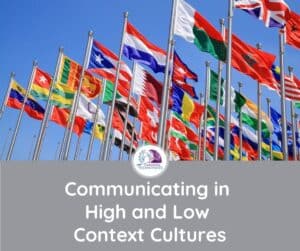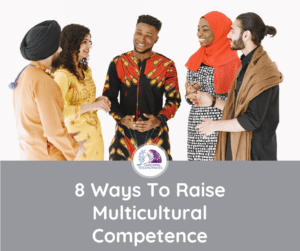If you work in an international corporation, you know how difficult it can be to have a consistent culture across regions and different countries. A consistent and foundational culture permeating the entire company is crucial for its cohesiveness and global leadership success. To help you in this endeavor, in this blog post, I want to share with you how a cultural environment is formed and what you need to know to be able to improve it.
Let’s start with the basics: let’s first talk about how cultures are formed.
How A Cultural Environment Is Formed
Cultures are formed when a group of people come together and start to develop a common pattern of both implicit and explicit social behaviors and shared core-values, amongst other cultural elements, which will explore in a bit. For now, let’s focus on the cultural behaviors.
Explicit behavior are those that are easier to grasp because they are directly observable. For example, everyone going in black clothes for a funeral. Even if your culture has another pattern of behavior, you will quickly notice the pattern of everyone around you wearing white at an event.
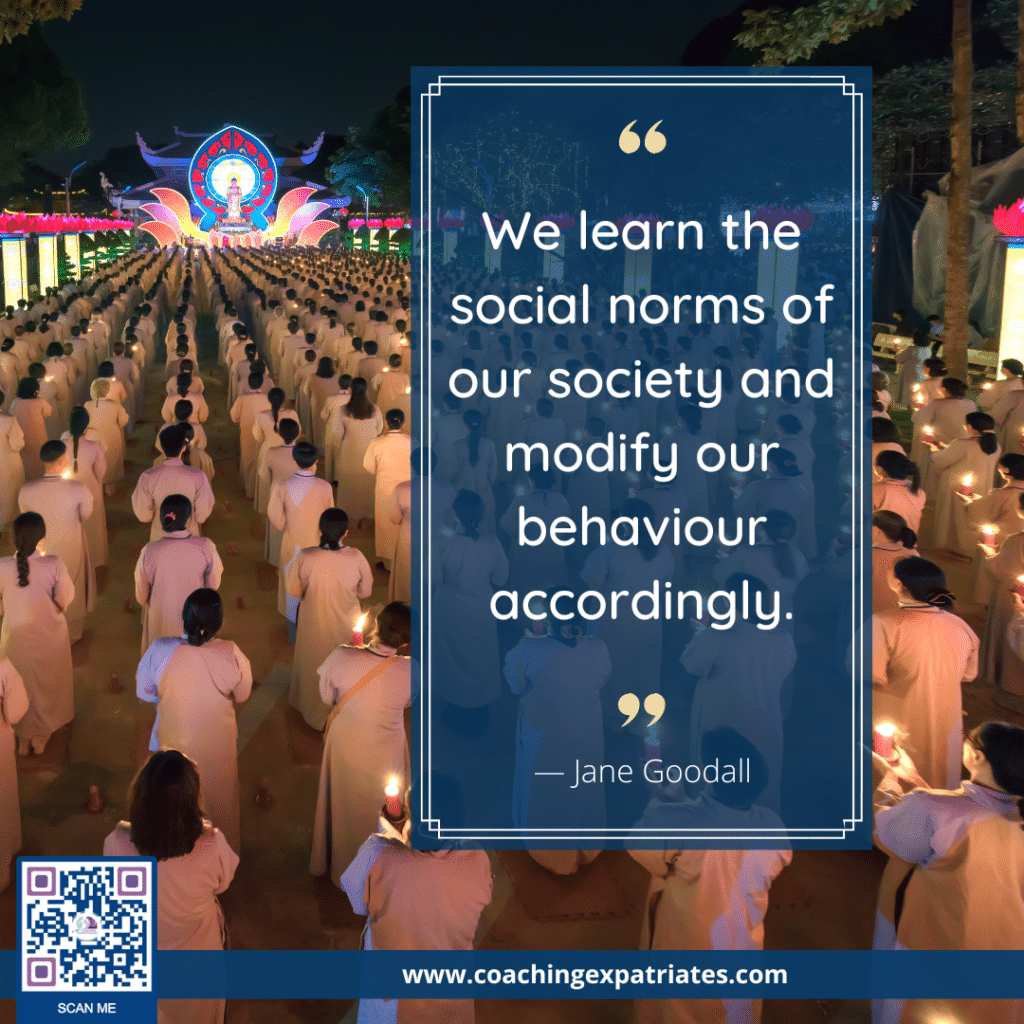
Implicit behaviors are those that cannot directly be observed, such as cognitive and emotional processes & reactions. For example, avoiding badmouthing the dead during a funeral can be an implicit behavior that is more difficult to observe and will come to light only when the social behavior is broken, and people will frown upon you for a “wrong behavior.”
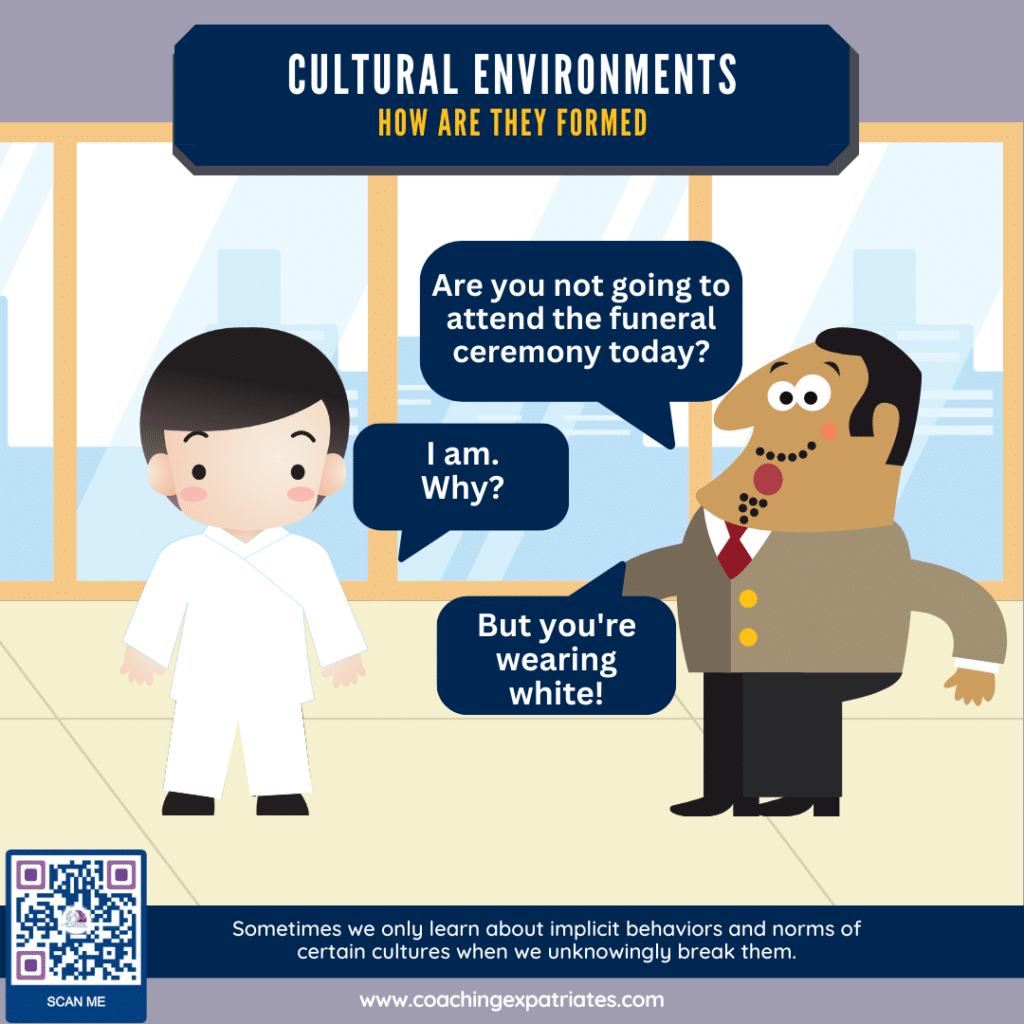
In the comics above, who “broke” the implicit social behavior? If you answered, “It depends,” you are right. It depends on which cultural context these 2 individuals are inserted at that moment. If they are in a cultural context where black is used during memorial services, then the person wearing white has broken the social norm. If they are in a cultural context where plain white clothes are used in memorial services, then the person not wearing white has broken the social behavior.
So culture is the sum of the total learned behavior of a group of people, which becomes sort of a tradition within that group and is transmitted to new members that are added to the group. They incorporate that culture’s core-values, cultural belief system, norms, signs, heroes, and even technology. Managing and leading all this cultural behavior is what Cultural Leadership does. Cultural Leadership is one of the 4 critical pillars in The Global Leadership Pillars™ for global leadership success.
To illustrate the concept of how a cultural environment is formed, let me tell you the fictitious story of the Brainy Society Of Simple Life.
Cultural Environment In The Fictitious Brainy Society Of Simple Life
The Brainy Society was created In San Francisco by 3 friends. They wanted to help people learn the little pleasures of enjoying simple things in life. As such, they use simple clothes, utensils and cutlery, tech stuff, and so on.
These 3 friends decided to wear blue T-shirts and simple pants every day, because it makes the wardrobe easy and simple, and they eat lunch outside every day that the weather allows. They bring their food in simple containers and use reusable cutlery. They happily share about their lives, problems, and joys during lunch time.
Over time, they decided to grow this group and bring in new people. People would go through a “recruiting process,” to make sure their values and behaviors were aligned with the group.
The group grew bigger and bigger, but the recruiting process always involved one of the founding fathers being present, and making sure the new members were aligned with the group.
In time, some members left, and even one of the founding fathers left. Oh! And the other one died!
One day, the remaining original member was not able to participate in the recruiting process, but they did their best based on what they learned about how to recruit with the founding fathers.
They did a good job, so the last founding father slowly allowed other members to take part in the recruiting without him. With time, HE also left the group to take care of other businesses in Hong Kong and assigned senior members to take over the group’s management.
All was going apace when eventually, one day, one recruiting process had only very newly added members, and they recruited 2 new people.
When these 2 new people came to lunch, they brought a very fancy lunch box. Most members scolded them for bringing a fancy lunchbox, reminding them that this was the Brainy Society for Simple Life, not Fancy Things, but some of the newer members also liked their lunchboxes and EVEN asked where they got them.

The very next day, these 2 new members started eating separately from the main group with their fancy lunchboxes, and one other member joined them. Slowly, some members started joining the new fancy lunchbox group.
And even though the group’s senior management ended up dismissing the member who first brought the fancy lunchbox, some members started bringing all sorts of lunchboxes, and wearing other colors of t-shirts. They were not defying the rules or the political system. They were just interested in a wide range of other things as well.
Slowly, the group changed into also bringing expensive food, different lunchboxes, fashion design bags, and clothes, and… the popular culture of the Brainy Society of Simple Things became… very different from its original intent.
Although this example tells a story of a slow cultural change based mostly on explicit behavior, this process happens for all elements of culture: implicit and explicit behaviors, values, norms, and signs.
What Are The Basic Cultural Elements In A Culture?
Before we talk about some strategies to improve corporate culture, let’s talk about the elements of a culture, so you can learn what you need to be aware of and need to tweak when dealing with corporate cultures.
Culture is a complex and multifaceted concept that encompasses various elements. While different scholars and cultural studies experts may present slightly different frameworks of cultural variables, the following are commonly recognized elements of culture:
1. Beliefs and Values: Cultural beliefs refer to the ideas, convictions, and principles that a group holds. Values are shared judgments about what is important and desirable in a culture. They shape people’s mindsets, attitudes, social behaviors, and interpersonal interactions, including intercultural interactions.
2. Norms: Business norms are the social rules and expectations that guide individuals’ patterns of behavior influenced by this collecting group. These business norms can be explicit (written laws, formal codes) or implicit (unspoken customs, social etiquette). Unfortunately, most companies have more implicit business norms than explicit ones, making cultural learning more complex and slow.
3. Customs and Traditions: Customs are the established practices and behaviors that are characteristic of a particular culture. Traditions, conversely, are customs or rituals passed down through time, often carrying symbolic or historical significance.
4. Language: Language is a fundamental element of culture as it enables communication and the transmission of ideas, cultural beliefs, and values. It includes spoken, written, and non-verbal forms of communication. In a corporate culture, language also encompasses acronyms and specific words created in and used by that group.
5. Arts and Aesthetics: This includes various forms of artistic expression such as music, literature, dance, visual arts, theater, and architecture. These artistic practices often reflect and preserve cultural heritage. In a corporate scenario, this also encompasses training, written articles, PowerPoint presentations, ads, and other forms of banners, arts, and general branding.
6. Social Organization: The way a company is structured and organized, including its social institutions (e.g., credentials, education, government inclinations, religion, economy), social hierarchies, and governance systems.
7. Technology: Technological advancements and tools developed within a culture reflect its level of development, innovation, and problem-solving approaches. In the context of a corporation, it can be in-house developed or purchased technology. How this technology is used becomes part of the corporate culture.
8. Material Culture: This refers to the physical objects and artifacts created and used by a culture. It includes items such as clothing, tools, housing, transportation, and food. In my early career, I worked for a company that provided free transportation for all employees. The bus, affectionately nicknamed “The Ride,” would go around the city collecting employees to go to work and at night to drop them off. What’s interesting about this is that the bonding and interaction inside the bus allowed all employees to become connected and engaged with each other. And “The Ride” was often referred to as an employee as well. When a new leader decided to abolish this practice due to a different cultural belief and to cut costs, our popular culture and interpersonal interactions also slowly changed.
9. Cultural Symbols: Symbols are objects, gestures, or words that carry meaning within a culture. They can be both tangible (e.g., corporate flag) and intangible (e.g., leadership symbols), representing shared values and basic ideas.
10. Cultural Heroes and Icons: Individuals or figures who embody and represent important values, aspirations, or achievements of popular culture. They often serve as role models and sources of inspiration. For example, long after Jack Welch left General Electric, he was still cited and honored as a leadership icon for decades.
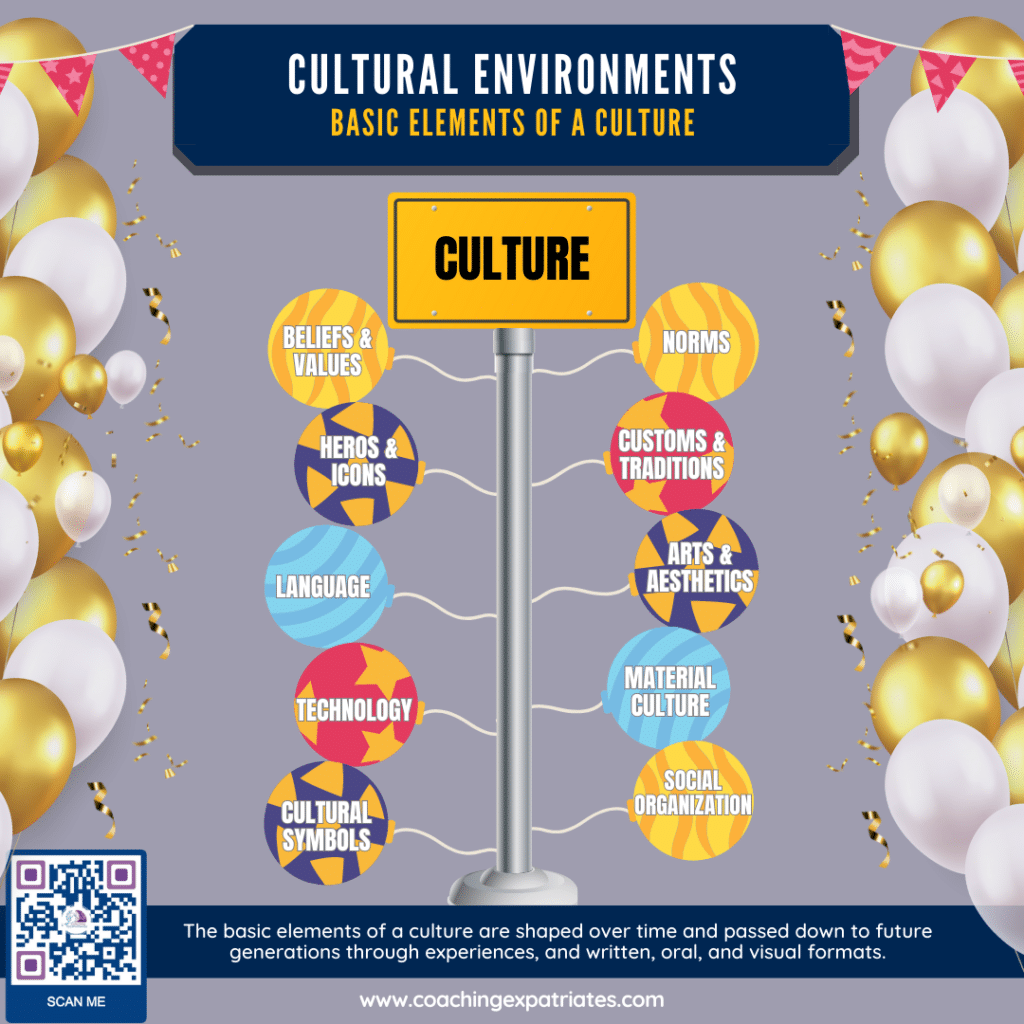
It’s important to note that culture is dynamic and constantly evolving, shaped by historical events, globalization, interpersonal communication, intercultural interactions, cultural beliefs, and other factors. When improving a corporate culture is not about making it perfect and immutable. It’s about ensuring it’s always aligned with the original values and missions of the organization.
Strategies To Improve A Global Corporate Cultural Environment
Now that you know how cultural environments are formed, It’s natural to ask next how to improve a corporate culture, especially a global corporate culture, when we have people spread out in more than one country and region, and still make this culture cohesive. Let’s talk about a few strategies.
Strategy 1: Define And Communicate Core Values Often
The first step in fostering a strong corporate culture is to define and communicate core values that align with the organization’s mission. I put this as the first strategy, because this is the foundation for everything. This strategy is super, super crucial! These values must be crystal clear, concise, and applicable across different cultural contexts. And once they are first defined and communicated, it’s not over. Doing it regularly will promote further understanding and engagement with these values.
Strategy 2: Hire The Right People
Although different cultures, nations, and human societies can prefer and prioritize different values, you can always find the best-suited candidates for that particular culture based on their alignment with the company’s values and cultural beliefs. If you hire people with strong qualifications but that don’t fully embrace the company’s values, you are at risk of having them slowly affect the company’s culture, even though their performance might be very good. And this can be more expressive the higher they are in the command chain. So hiring the right people with aligned values with the company is crucial for any corporate culture that expands globally.
True Story
When I started business school, many years ago, we were recommended to apply to one of the volunteer organizations that our college offered right from the very first semester to start gaining experiences. I applied to AIESEC, an international organization that promoted cultural exchange through professional work exchange programs. In the first stage of the hiring process, I participated in group dynamics with 12 or so other candidates. 2 of them were very outspoken and would keep most of the airtime for themselves. On top of that, they were very articulated. To make myself heard, I would have to either use aggressive communication, plus make use of nasty interruptions, which I found very impolite. Doing these things was not my style at all back then and I still didn’t know anything about strategies flexing one’s communication style. To my surprise, I was selected, as well as a Nipo-Brazilian candidate also from this group was selected. He, too, was on the quiet side during the selection. We then went to ask why we were selected, since we thought it was a miracle. We didn’t find ourselves that impressive, after all. They told us that we arrived early and helped set the chairs, and stayed to re-organize the room after everyone else left. They also said that during the dymanics, we were also the most supportive and helpful of that group. They were looking for supporting, helpful and resourceful people. They were selecting based on aligned values and desired traits, not based on performance. They new very well that everyone there were newbies just like me. Values aligned meant more than a flashy person, impressive on the surface. That unique event thought me a lot about hiring the right people, especially when I experienced first hand a fabulous corporate culture they had because of that. Hiring is an art, and a successful recruitment process must have strategy and preparation.
Strategy 3: Encourage Cross-Cultural Collaboration
It’s crucial to encourage cross-cultural collaboration among your teams to bridge the geographical gaps and heritage differences. This also helps build trust and unity among the team members. This can be achieved through regular cross-cultural and cross-functional virtual meetings, cross-functional projects, and establishing channels for open communication.
Let’s imagine 2 different scenarios:
One first scenario is where an American company operates locally but has an incredible heritage diversity that includes Hispanic Americans, African Americans, American Indians, Pacific Islander, Asian Americans, and even individuals who are second generations from individuals who came from South America. In this scenario, it’s extremely beneficial to foster interactions among the different heritages, so they can learn from each other, to promote cultural and heritage understanding, so that people can become more open-minded and less prone to dangerous assumptions that naturally lead to terrible forms of miscommunication.
A second scenario is a global company with executives interacting with people in different global regions, like Latin America, Europe, Asia, and Africa, for example. The religious beliefs, cultural ideas or cultural anthropology, political systems, values, and preferred dimensions of culture are completely different. What integrates all these people is the company’s values, mission, and purpose. Promoting intercultural interactions and collaboration will foster a social network within the company that becomes bonded by cultural learning and intercultural trust.
If you think about it, you can figure out a third scenario, where both first scenarios are mixed and mashed, having both a diversity of heritages within certain regions or countries plus different cultures in various regions. This is a much more complex scenario, but very frequent in big multinational corporations like Microsoft, Google, Amazon, and General Electric, the company I worked for for many years of my career. This type of complexity requires solid cultural leadership to maintain the cohesiveness of culture and employee engagement and retention.
Strategy 4: Foster Highly Trained Inclusive Leadership
Effective leadership plays a pivotal role in shaping global corporate culture. Besides leadership training, these leaders must be extensively trained about the companies’ values and how they must show up in employees from different global regions. For example, “respect” is a value prioritized by many cultures. While Asians show their respect by not directly looking you in the eye when providing input or opinion, Americans do just the opposite. This means to say that Corporate Values training alone is not enough: a cross-cultural understanding of these values and how they may show up in the organization is also in order. Leaders cannot acknowledge what they don’t recognize, so training all global executives in intercultural interactions and understanding is crucial. On top of that, they should also be trained to embrace diversity, promote inclusion, and ensure equal opportunities for all employees, regardless of their location.
Strategy 5: Implement A Virtual Onboarding Process
When it comes to integrating new employees into the corporate culture, a virtual onboarding process becomes essential! Provide comprehensive training, especially on values and behaviors, share clearly what employees are expected of, promote virtual and in-person team-building activities, and assign mentors to help new hires navigate their roles, cultural differences, and the implicit values and behaviors – those things that are NOT written anywhere. You can then have localized in-person onboarding to address local laws, requirements, and processes.
Strategy 6: Leverage Technology For Collaboration And Engagement
Leveraging technology is key to fostering a sense of unity and engagement among geographically dispersed teams. Use collaboration tools, video conferences, and virtual platforms for team-building activities, training sessions, and social interactions. The more opportunities you create for collaboration and engagement, the more innovative the team will become in using this technology.
Strategy 7: Celebrate Diversity And Promote Cultural Exchange
Embrace the diverse backgrounds and perspectives within your organization. Encourage employees to share their cultural experiences, traditions, and knowledge with one another. Celebrate global holidays and organize cultural exchange programs to foster mutual understanding and appreciation. I once worked for a company that used to record videos of people in different regions, celebrating and recognizing people on specific country holidays or occasions. It’s SUPER fun to see a video clip with your co-workers holding your country’s flag or painted in your country’s colors to celebrate your holiday while recognizing you and other people from your country for your hard work! That made me feel really more connected to them, even though they were so far away. I’m sure! You can also find fun ways to use this strategy of celebrating diversity and promoting cultural exchange in novel ways!
Strategy 8: Establish Regular Feedback Opportunities And Processes
Last but not least, establish regular feedback processes to gauge the pulse of your global corporate culture. Conduct employee surveys, hold virtual town halls, and encourage open and honest 1-1 conversations about improving cultural dynamics and employee experiences. This feedback I’m talking about is different from the manager giving an employee feedback. What I am talking about in this strategy is you asking your employee for their specific feedback on cultural elements. Your job as a leader is to receive feedback addressing cultural aspects.
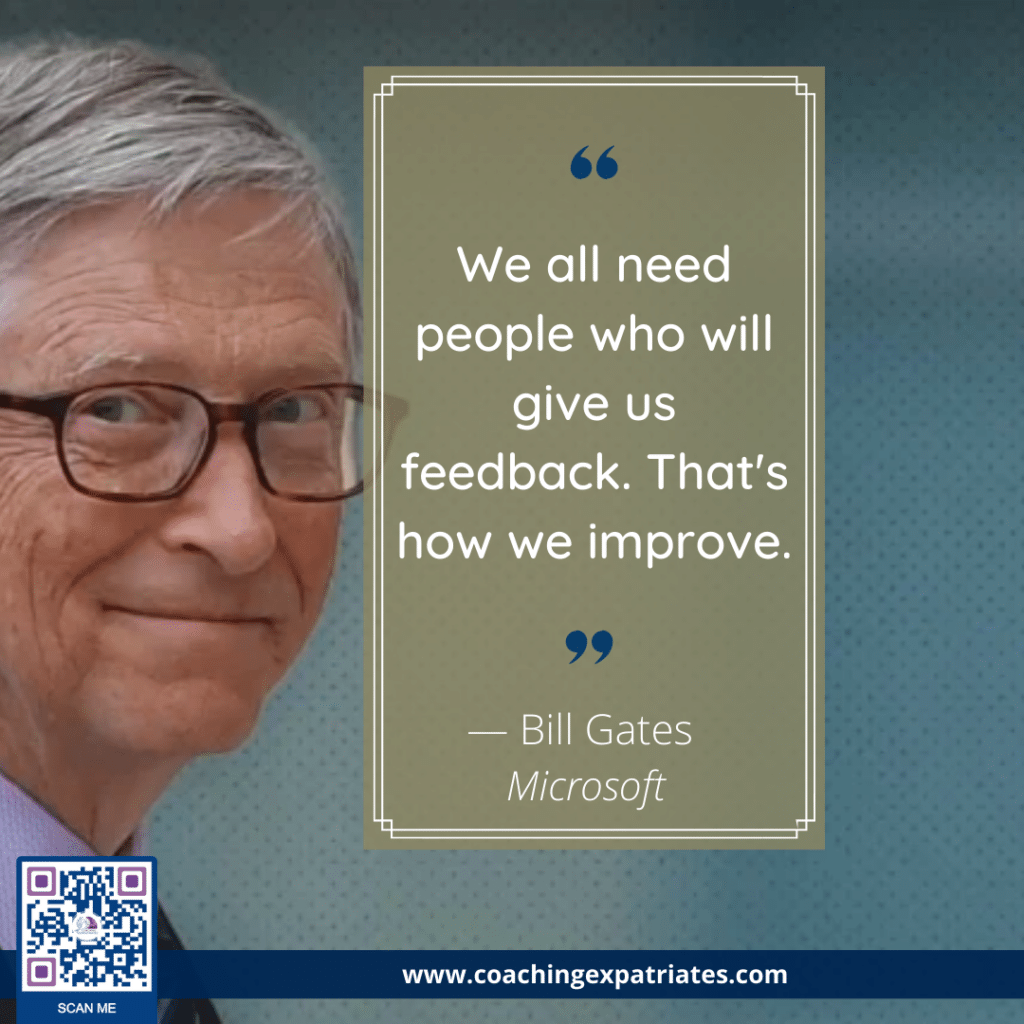
Here are a few example questions you can use in a pulse survey or feedback session:
- On a scale of 1-10, how well do you believe the company’s core values are embraced and reflected, in daily operations across different countries and regions?
- Do you feel that your contributions are recognized and valued, regardless of your geographical location?
- How would you rate the level of cross-cultural collaboration within your team or department?
- To what extent do you feel included and supported by your colleagues and supervisors, regardless of cultural or geographical differences?
- Are there adequate communication channels and tools in place to facilitate collaboration and information sharing across different countries and regions?
- On a scale of 1-10, how comfortable are you in expressing your ideas and opinions, knowing that they will be respected and considered?
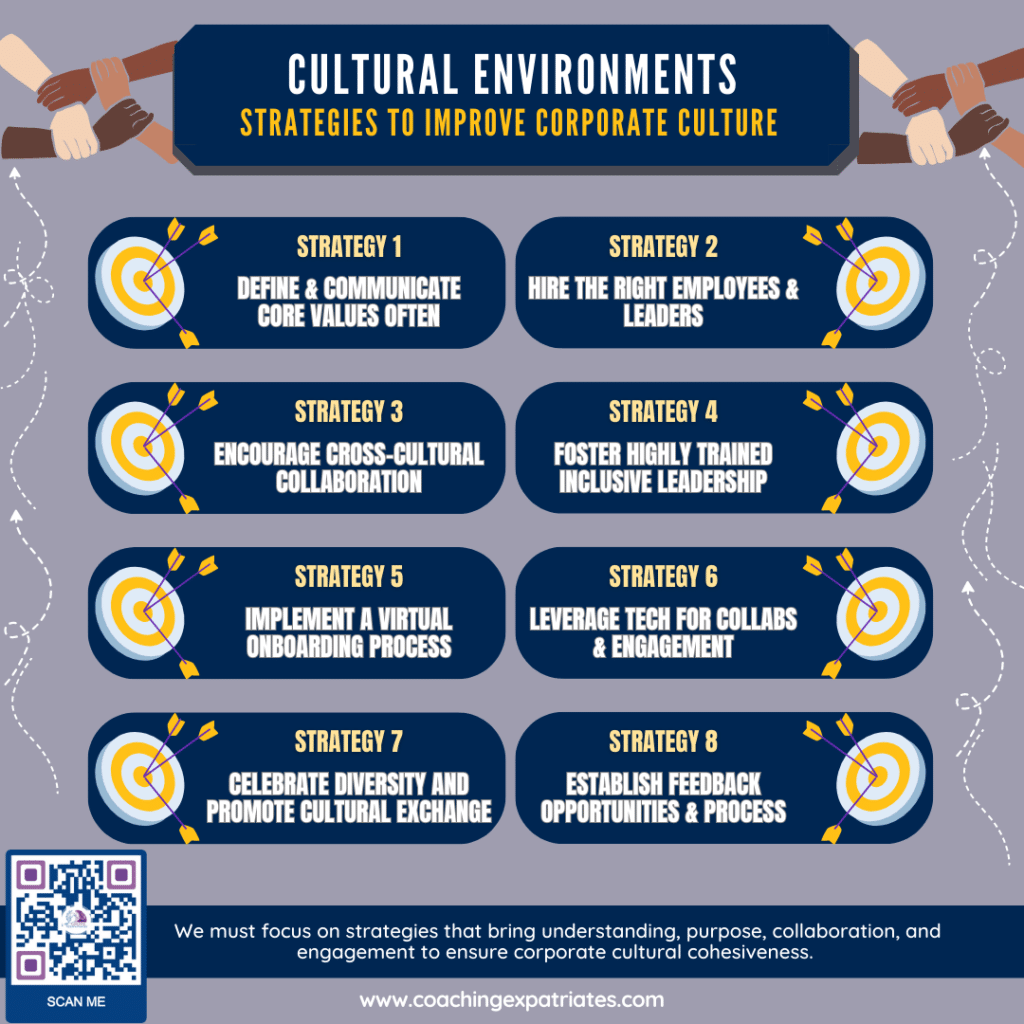
Regarding these strategies, it’s extremely important to note that using just one or two out of these 8 strategies might not guarantee a cohesive corporate culture across borders. Put together a strong corporate strategy that includes many of these ideas and that apply to your corporate situation. Ideally, if budget permits, implement all these strategies, even if you have to do it for an extended period of time, like one to three years.
Final Remarks On Cultural Environment
Building a strong global corporate culture may present unique challenges, but by implementing these strategies and knowing how cultures are formed, organizations can overcome barriers and create a cohesive, profitable, and thriving work environment. It’s crucial to remember that a positive and engaging corporate culture is the foundation for corporate success.
If you are looking for a leadership development partner and consultant to help you develop some of the strategies mentioned in this blog post, you can hire me as your executive and development coach. Have a Free Strategy Call with me. We can go over your challenges and devise together the top actions to implement, with your goals and objectives in mind.
If you are interested in developing specific global leadership skills on top of cultural leadership, check out our online global executive leadership program called The Global Leadership Pillars™, where we help you develop skills during 9 online modules, with an intensive program specially meant for global leadership development. It’s a unique leadership training methodology that will change the way you think, relate, and strategize as a global leader for impactful business decisions.
If you enjoyed this post, consider subscribing to our newsletter using the form below. We focus on providing good bite-sized content to global leaders and executives who want to make impactful business decisions and be more inclusive and influential. We know your inbox is sacred, so we email just once per week, and we never sell, rent or do anything funky with your information. Trust is the basis of Global Leadership, and we fully honor it.



